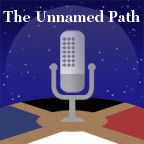
The Unnamed Path
Hyperion (Eddy Gutierrez)
The Unnamed Path is an emerging shamanic path for gay men. This path includes the magical and oracular arts, shamanism, energy healing, midwiving the dying and spirit contact. This podcast presents and informative discussion of this tradition, its practices and beliefs and how it can help gay men everywhere embrace their sexuality and reclaim their birthright as spiritual leaders in their community. http://unnamedpath.com
- Men Who Love Men
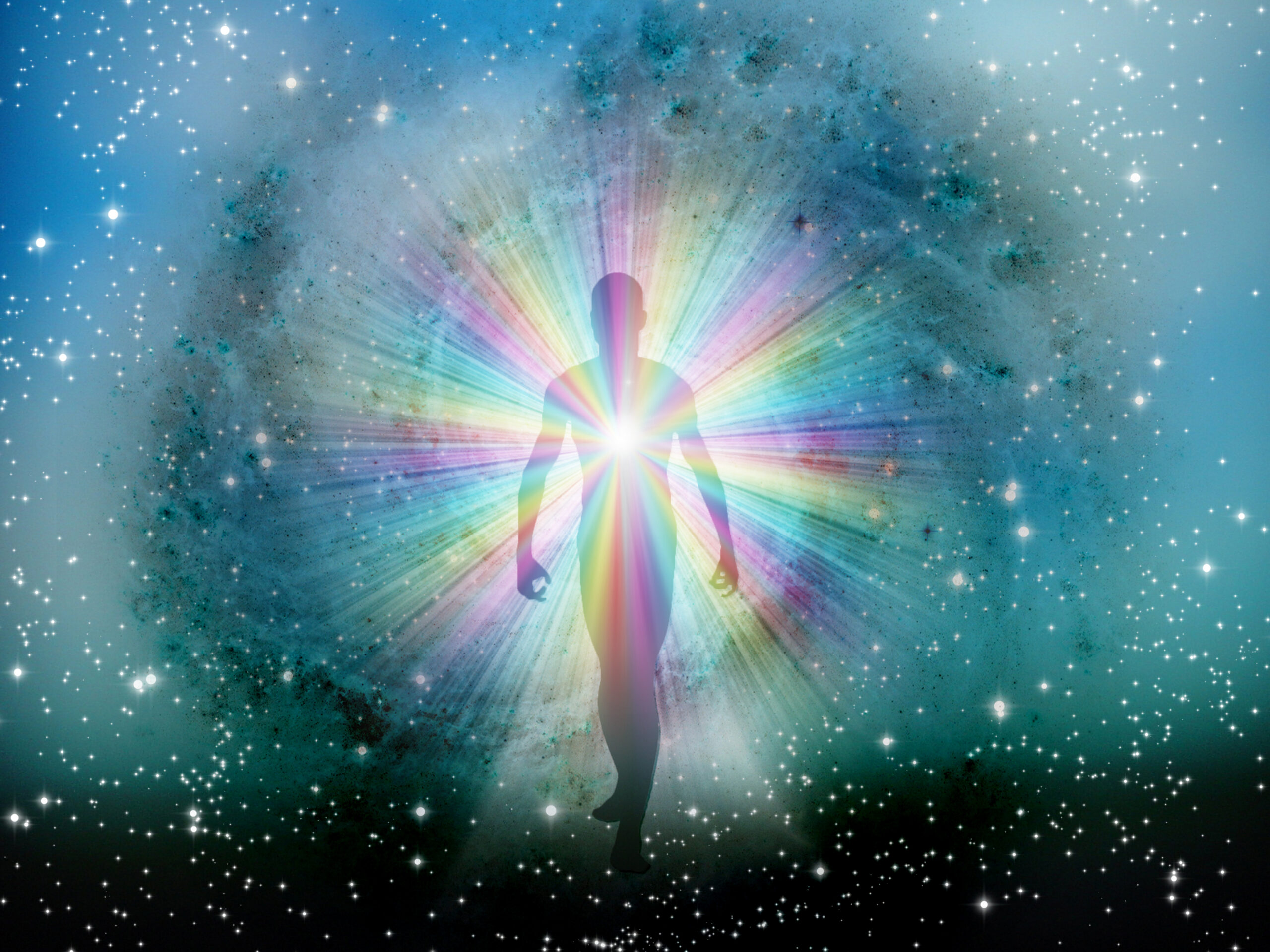
Men Who Love Men
Written by: Sawyer Massie & Adam Black
The Unnamed Path is a spiritual tradition for Men Who Love Men. We strive to uncover, live and share a distinct energetic current that embraces our unique experiences as men and male-bodied persons within the Male Mysteries. But what does “Men Who Loves Men” mean? Who does this refer to? Men Who Love Men is a multifaceted term that encapsulates our collective identities within the LGBTQIAP+ community, recognizing and celebrating the diversity in our experiences. It reflects our sexual, intimate, and/or romantic expressions of love and connection.
There is no singular way to be a man who loves men. We transcend spatial and cultural boundaries, existing in every culture and coming from all walks of life. Many terms and identities, claimed and imposed, have been used to describe the nature of our love. We are – and have always been – more than one experience. What connects us is not restricted to blood or identity, but rather a shared context in which we engage and experience the world through our love. This often includes discrimination, violence and hatred, but also our journeys of self-discovery and coming into our own power.
When we speak of love between self-identifying men this usually evokes images of intimacy and sex. It can be something carnal and/or deeply emotional. When men love it is a powerful current that connects two beings. In the Unnamed Path that current is taken to a deeper and higher level simultaneously.
We embrace this connection not only on a physical and emotional level, we elevate it to a spiritual one. Though this love can take many forms, including spiritual, it does not have to be. Though there is an inherent spiritual element to Men Who Love Men, this love does not intend for you to live a solitary spiritual life of exclusion. The energy current of Men Who Love Men taps the Male Mysteries in a way akin to the Fertility Mysteries and presents as an aspect of the reclaimed Gay Male Mysteries. Men Who Love Men includes all self-identifying men including those in the non-binary and trans community.
We acknowledge that men have loved men throughout history, even going back to pre-recorded history. These men lived and loved, and in so doing created a current of love that travels to us today. In the Unnamed Path we tap this current of love to revel in it. Men Loving Men is empowering and sacred. It creates an energy that is undeniable and palpable. This current runs through all self-identifying Men Who Love Men, whether physical or emotional. Tapping into that current can give us power, community, connection and immense wisdom of all that came before us.
In the Unnamed Path this love is not limited to the men around us, or even the men all over the world. This love transcends time and place. We love all Men Who Love Men, those who came before us, those we share our existence with, and all those who will be in the future. This energy, our love as Men Who Love Men, can be tapped and worked with to bring healing, magic, prophecy and wisdom. The term Men Who Love Men honors the inherent sacredness in our existence as gay / queer men. You are seen. You are accepted for who you are. You are loved.
The post Men Who Love Men appeared first on Unnamed Path.
15 June 2023, 10:26 pm - A Unique Capacity to Love
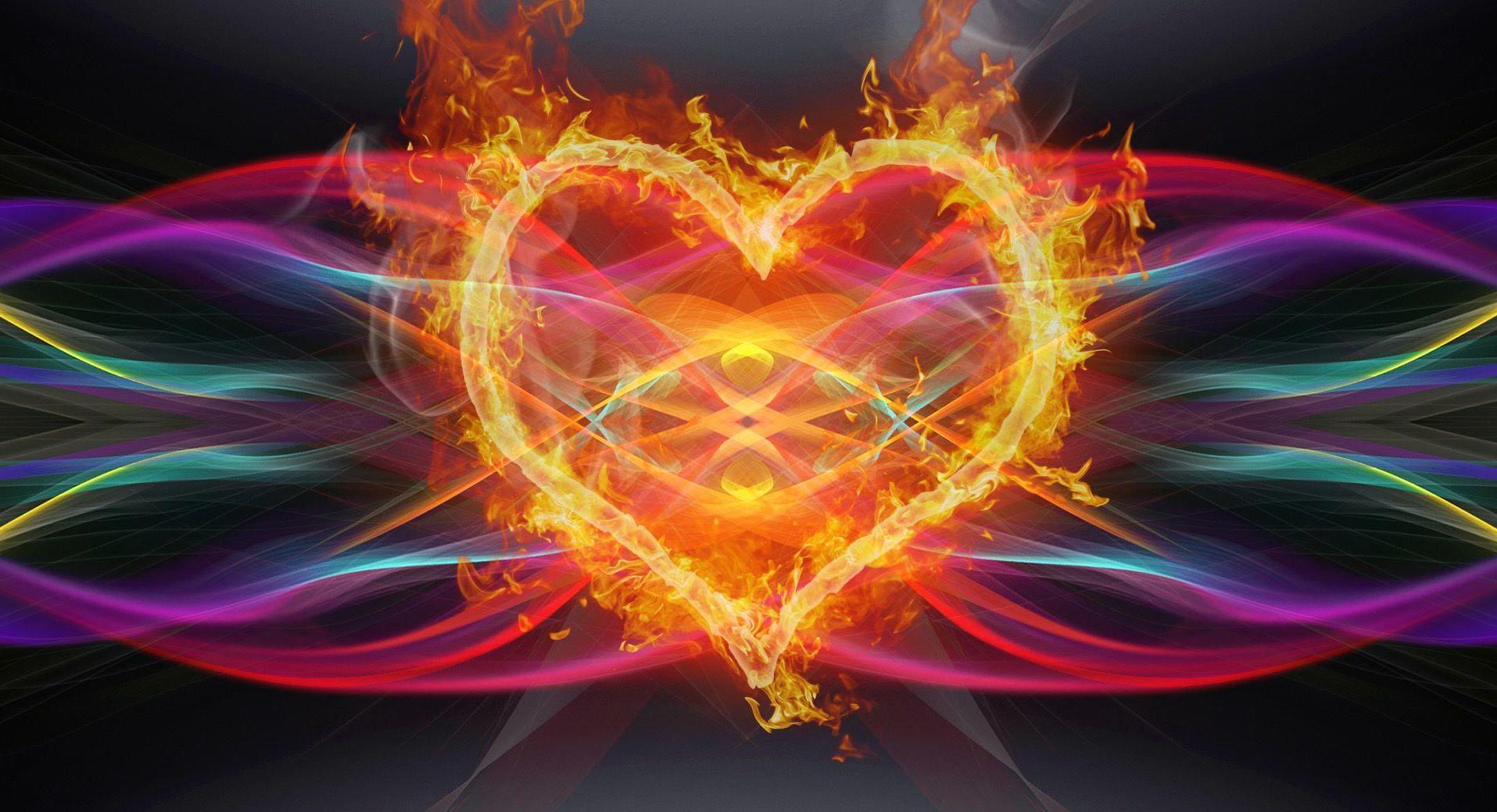
A Unique Capacity to Love
Throughout Hyperion’s podcasts, he often refers to how MWLM (men who love men) have a “unique capacity to love” and that it is through this unique capacity that we connect to the spiritual and tribal current of the ancestors. He adds that it is actually this unique capacity that is what empowers us as liminal people and grants access to the gifts of shamanism, magic and prophecy, energy healing and deathwalking that we use in the Unnamed Path. But what does this mean exactly and how do we access this capacity?
To approach this for myself, I looked at what unites us as gay and queer men. Beyond the individual differences we each have through our upbringings, our cultural and ethnic backgrounds, what are the aspects that I can recognize in a brother who also identifies as a MWLM? Obviously there is the fact that we are romantically and erotically attracted towards other men as partners, but how does this present itself? Think back to when you first discovered your attraction to men. What brought this awareness about in you? How did your body tell you?
I know for me I can float back to before puberty. I can’t say for certain it was a sexual impulse, but I remember looking at the comic books I had as a kid and there was one of a Tarzan-like hero, buff and wearing a fur-loin cloth. I’d just stare at his muscled form and feel a sense of longing. Desire would build in me. I’d feel a rush of excitement but it wasn’t concentrated as a sexual charge in my groin at that point. It was a diffused and more central yearning that I can identify as residing in my core, through my chest and belly. It was like being hungry for a food I had never tasted yet. Other TV characters would bring this up in me as well and so did some classmates. I hadn’t at that point in life identified it as my sexual orientation… it was just a natural impulse and. . . it was a secret. Like many others growing up, I knew to express this feeling was something that wouldn’t be approved.
As I got older, this feeling progressed and did express itself sexually. My inner fantasies and how I fuelled them were filled with male imagery. I also had that moment that is pivotal for all MWLM, that moment when we admit to ourselves that this is who we are attracted to and therefore claim our sexual identity followed by the eventual coming out to others.
So think back to these defining moments in your own life. Think back to your first inkling of knowing you were attracted to men. How did you know that? What told you? What did it feel like and where in your body did you experience that feeling? Breathe into this feeling now. Call it into your entire body. Now think of this feeling as the resonance, or that homo-erotic current that Hyperion also discusses. That MWLM are not attuned as much to the aspect of polarity, but rather that of resonance. See this feeling like a frequency, like a tuning fork that has been struck and is vibrating at its own harmonic. See if you can feel this vibration connected also through your body so you can call it into you as a physical sensation, an entire felt-sense experience. This is what we connect to and embody as our unique capacity to love.
And through this unique capacity to love, there are also corresponding shared experiences that become tribal. Our discovery of self and attraction, often alone, often in an environment that doesn’t celebrate it. This sense of isolation and fear of rejection is one of our tribal wounds. The dark night of the soul where many of us struggle in claiming our identity is another. But in tribal wounds, there are also tribal strengths and gifts. The empowerment of claiming one’s self authentically, the liberation of overcoming limiting beliefs and structures. The realization that beyond sexual orientation, MWLM also bring forth a social orientation – a different way of expressing what it means to be embodied as masculine in the world. These also, are our resonances.
So when Hyperion says that when raising the Great Crossroads we are to access this unique capacity to connect to the ancestors through the veil of space and time – this is what is referred to. Call into your being the homo-erotic resonance as a MWLM, feel it in your body and know there are shared defining experiences that unite us despite other differences across culture and time. This is what it means to be part of the tribe of MWLM and in the ancestral current.
The post A Unique Capacity to Love appeared first on Unnamed Path.
22 November 2022, 9:34 pm - Shamanism and Trance Work For Overcoming Queer Trauma
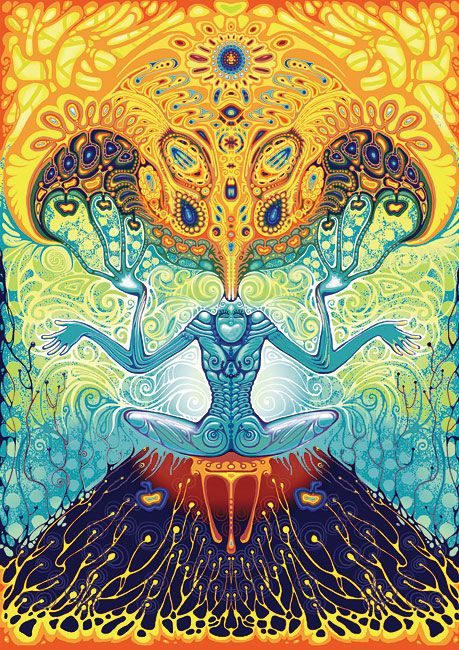
Shamanism and Trance Work For Overcoming Queer Trauma
Shamanism as a spiritual practice has deep roots in indigenous and tribal traditions. Humans have used shamanism for millennia to communicate with the spirit realm to bring through information and healing. Shamanism is believed to have originated in the Siberian religion of Northern Asia, but shamanic practices have been found in almost every continent and culture. Each region would have their own unique rituals and traditions, however certain common core elements were found in spite of these differences across distance and time. It is these core practices that inform shamanic work today and that the Unnamed Path also integrates into its workings. Ancestor worship, spirit-based healing and transformation, and developing relationships with spirits are elements that the Unnamed Path embrace as practices through the path of Shamanism.
To be respectful of the indigenous cultures that Shamanism originates from and the role of the Shaman itself, Unnamed Path initiates do not name themselves as “Shamans” but will will say that they are shamanic practioners, do journey work or spiritual courtship.
Shamanic Journey
A shamanic journey is undertaken to connect with deities, ancestors and nature spirits in order to gain insight and wisdom and also bring healing to oneself or others. There are many different ways to journey, but all involve entering into an altered state of consciousness. In this state we are more receptive to signals from spirit. Typically this is accomplished through the use of a sonic driver such as the beating of a drum or other rhythmic musical instrument. The repetitive beat can assist in shifting consciousness from an alert and active state to a more meditative state. In the past, shamans also used plant medicine that permit access to higher levels of being. Dance and other ecstatic practices can also assist in accessing altered consciousness. Once in an altered state of consciousness, the shamanic practitioner will craft an intention and then journey through the three worlds and make contact with their spirit helpers and allies. Receiving messages or healing experiences can take place and be integrated once the journey is completed.
Trance Work
Trance work is a complementary spiritual practice to shamanic journey work that also entails entering a meditative state to commune with spirit. Trance work can be done individually but is often led by an experienced practitioner who will lead a group through a guided visualization.
Overcoming Queer Trauma
In their tribes, Shamans were the healers and would conduct journeys to bring medicine or do soul retreivals as a form of healing from trauma. Shamanic practices are used today for the same purpose of recovering from psychological wounds and trauma.
As a gay or queer individual, childhood is often marked by the wound of otherness and isolation. Fear of judgment or shame can result in repressed feelings, self-worth difficulties, and traumatic incidents. Despite advances in LGBTQIA+ rights and representation, many societies worldwide still do not openly accept queerness, making one’s identity appear “wrong” from a young age. Negative religious messaging can also split queer youth from their connection to spirituality and spirit. Despite moving into new environments that can be more accepting, individuals may carry over past limiting beliefs that keep them from living as fully and authentically as they would like.
Shamanic journey work can be an empowering and healing experience in addressing queer trauma. In the Unnamed Path, we journey and connect to the tribal current of the Ancestors of Men Who Love Men. Around their bonfire, we find connection, love, healing, purpose and can reclaim the gifts of what it means to be part of this tribe. Wounds can be transformed, shame and fear transmuted, sexuality and spirituality can be integrated.
During apprenticeship in the Unnamed Path, students are guided in shamanic journeys and trance work to make contact with the deities of the path as well as with the Ancestors of Men Who Love Men. Relationships are made with helping spirits and with the shadow part of ourselves. This healing and integration is a powerful experience which makes journeywork a foundational practice in the Path.
The post Shamanism and Trance Work For Overcoming Queer Trauma appeared first on Unnamed Path.
29 October 2022, 3:18 am - Gay / Queer Love Magic Herbs
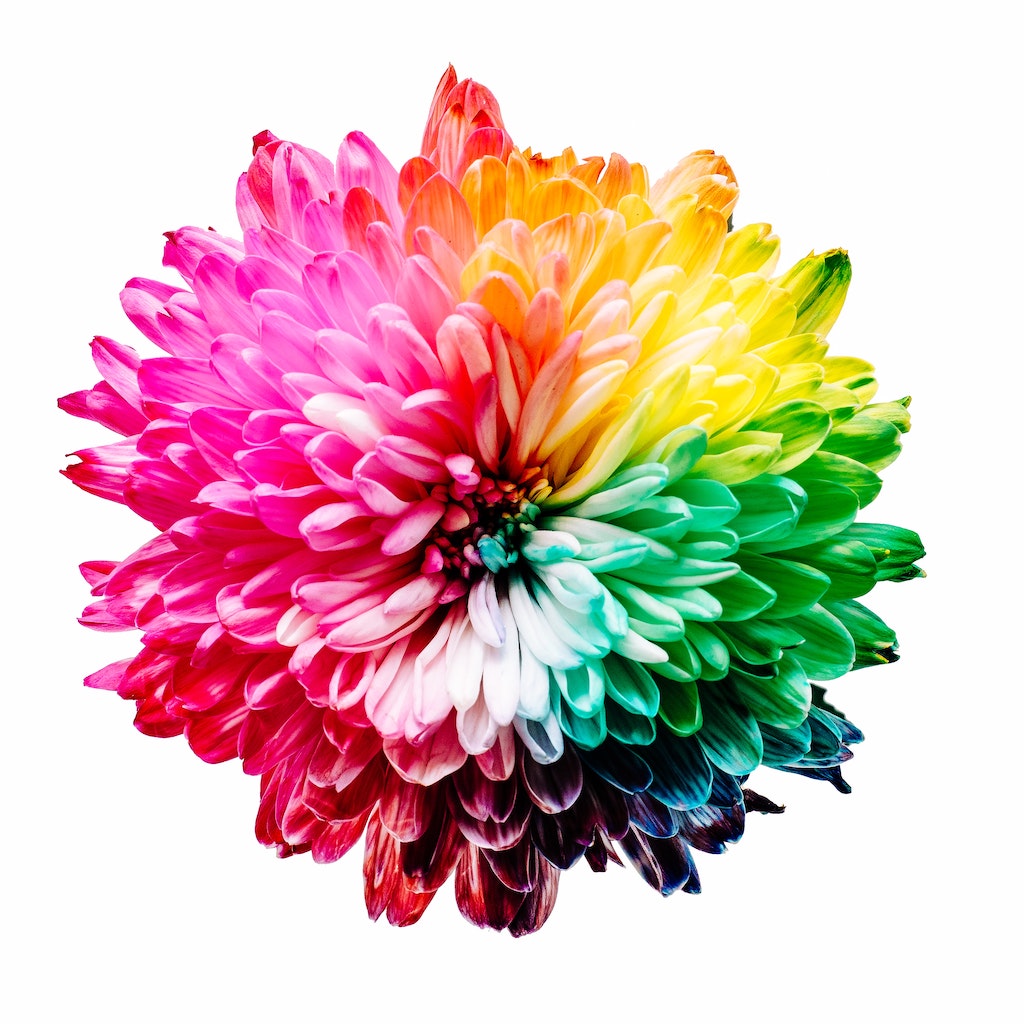
Throughout time, magic spells have been crafted to draw love and an ideal partner. Plants and herbs are effective allies in crafting such spells and searching on-line you will find a long list of flowers, plants and herbs magicians use for love spells. The plant spirit can also be approached through a shamanic journey in order to assist the practitioner in the love spell working.
Gay and Queer men are no strangers to using magic to attract a same sex partner. However, there are particular plants, flowers and herbs that are more aligned with Gay Love spells. The power within these plants resides in their historical significance as indicators of same sex love. Here are but a few plants that one can ally with for same-sex love spell workings:
Calamus (Water/Moon) The name originates from the Greek myth of Kalamos (“reed”) and Karpos (“fruit”), two young gay men in love. Karpos died while the two were having a swimming contest, and Kalamos, so struck with grief, allowed himself to drown and became the Calamus Reed whose sound in the wind was attributed to sighs of grief. Calamus, also known as Sweet Flag, channels gay masculine energies and the root is considered highly commanding.
Carnations, Green (Fire/Jupiter) Channel gay male energy. Carnations in general are considered highly protective, especially in areas concerning love.
The green carnation became a queer symbol in 1892 when Oscar Wilde instructed a handful of his friends to wear them on their lapels to the opening night of his comedy “Lady Windermere’s Fan”. From then on, wearing a green carnation on your lapel was a secret, subtle hint that you were a man who loved other men.
In 1892, Wilde’s lover Lord Alfred Douglas wrote a poem called “Two Loves,” reminiscent of Sappho’s poetry, painting an image of a flower-filled utopia (emphasis on flowers added):
I dreamed I stood upon a little hill,
And at my feet there lay a ground, that seemed
Like a garden, flowering at its will
With buds and blossoms.
There were pools that dreamed
Black and unruffled; there were white lilies
A few, and crocuses, and violets
Purple or pale, snake-like fritillaries
Scarce seen for the grass, and through green nets
Blue eyes of shy pervenche winked in the sun.
And there were curious flowers, before unknown,
Flowers that were stained with moonlight, or with shades
Of Nature’s wilful moods; and here a one
That had drunk in the transitory tone
Of one brief moment in a sunset; blades
Of grass that in an hundred springs had been
Slowly but exquisitely nurtured by the stars,
And watered with the scented dew long cupped
In lilies, that for rays of sun had seen
Only God’s glory, for never a sunrise mars
The luminous air of Heaven.
The poem continues on, describing a young man, whose “wind-tossed hair was twined with flowers” and who was wearing “three chains of roses” around his neck. He comes toward the poet and kisses him. “His cheeks were wan and white / Like pallid lilies, and his lips were red / Like poppies,” Douglas continues. The boy reveals that his name is “Love” and ends with saying, “I am the love that dare not speak its name.” This phrase, “the love that dare not speak its name,” was later brought to prominence as reference to homosexuality in Wilde’s gross indecency trial in 1895.
Hyacinth (Water/Venus) Sacred to gay men and channels gay energy, though smelling the fresh flowers dispels works of “fascination”.
The significance of the hyacinth comes from the tragic love story of Apollo and Hyacinth from Greek Mythology. Apollo, God of the Sun, and Hyacinth, a Spartan Prince, were a loving couple who rode chariots drawn by swans, played the lyre and practiced the art of prophecy.
In the literary myth, Hyacinth was a beautiful youth and lover of the god Apollo, though he was also admired by Zephyrus, the West Wind. Apollo and Hyacinth took turns throwing the discus. Hyacinth ran to catch it to impress Apollo, was struck by the discus as it fell to the ground, and died. When Hyacinth died, Apollo did not allow Hades to claim the youth; rather, he made him a flower, the hyacinth, from his spilled blood. According to Ovid’s account, the tears of Apollo stained the newly formed flower’s petals with the sign of his grief.
Lavender (Air/Mercury) Draws affection, especially from men, and can be used for gay, lesbian, bisexual, and transgender energy.
This flowering plant in the mint family is inseparable from queerness. While we don’t know whether “lavender” refers to the color or the herb now in a queer context, but either way the word seems to have been used in this context since the 1920s. It’s now used interchangeably with “rainbow” to mean “LGBTQ+” at events like Lavender Graduations and the annual Lavender Law Conference of the LGBT Bar Association.
One of the most notable uses of “lavender” comes from the historian Carl Sandburg, who wrote in 1926 of Abraham Lincoln: “A streak of lavender ran through him; he had spots soft as May violets.” Many have interpreted this to mean that Lincoln had a queer side.
Persimmon (Water/Venus) Considered a “queer” fruit, it is carried by gay, lesbian, transgender and transsexual people to draw luck. Eaten, it offers guidance to your perfect lover. Carry each and every seed from a Persimmon you’ve eaten yourself to aid in magic.
Orris Root (Water/Venus) it is said that the orris root powdered and burned in incense or carried by bottoms/submissives can attract dominant love into one’s life.
No matter what floral names are associated with queerness, queer people are resilient. We bloom every year in a brilliant rainbow of colors around the world, always returning, no matter how bitter the winter.
The post Gay / Queer Love Magic Herbs appeared first on Unnamed Path.
28 October 2022, 7:49 pm - Shadow Work

Shadow Work
What is the Shadow?
The shadow is the “dark side” of our personality because it consists chiefly of primitive, self perceived suppressed negative emotions and impulses like rage, envy, greed, desire, disgust, and unworthiness. However, this can cut ourselves off from many of our best qualities as well. Throughout our lives, all we deny in ourselves—whatever we perceive as inferior, evil, or unacceptable—become part of the shadow. Any feeling, trait or emotion we find incompatible with our chosen conscious attitude about ourselves relegates to the shadow. The personal shadow is the disowned self. This shadow self represents the parts of us we no longer claim to be our own. These disowned parts of ourselves don’t go anywhere. Although we deny them in our attempt to cast them out, we don’t get rid of them. They are repressed as part of our unconscious. We can’t eliminate the shadow. It stays with us. As we traverse our spiritual path as practitioners, the shadow can remain repressed and unattended to. In order to embrace our true selves we must embrace our shadow. The trouble arises when we fail to do this. For then, to be sure, it is standing right behind us.
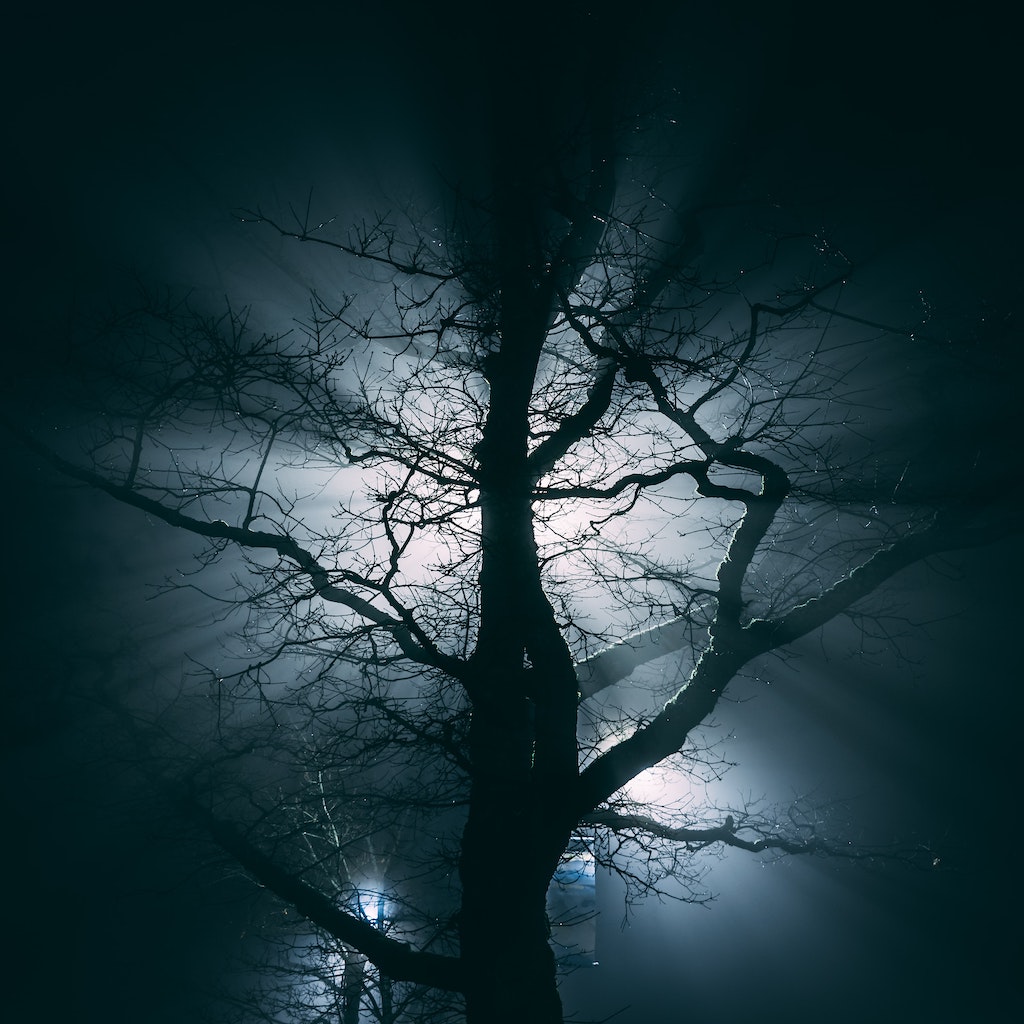
What is shadow work?
Carl Jung brought shadow work into psychotherapy making it more conscious in working with shadow as an archetype. It has become a greater area of study in modern pagan and traditional craft. Shadow work is the process of working with and reclaiming these different parts to ourselves, the parts of ourselves that have been exiled.
Shadows typically develop in childhood. As a child, there are many times you’re told to stop doing something or repress parts of yourself that for whatever reason have been deemed unacceptable. In addition, shadow can develop through trauma experiences. Experiences so damaging, the psyche divests these feeling to an exiled aspect of ourselves. Our shadows thus begin to internalize beliefs about the world as we lived it that time or limiting beliefs about ourselves, our worth, what we deserve.
The objective of shadow work is to make a deeper connection to yourself and your soul; to be a more complete version of yourself and embrace your own power. In shadow work we begin to journey through the landscape of the unconscious mind, which consists of the things that we repress and hide from ourselves such as traumas.
The shadow self might show up when you’re triggered in your relationships and through varying levels of anxiety and depression. And when this seemingly dark side does rise up, it might reveal something about your personality that’s worth a closer look. In the Unnamed Path, we work with shadow by becoming more conscious of how shadow shows up in our daily lives. We explore shadow facets that we have cast off and take ownership of them. We use shamanic journey work to meet and engage with shadow, ultimately to integrate this part of us.
While anyone can do shadow work at any time, it’s not for the faint of heart. Shadow work means delving into deep emotions, raising the spectre of past wounds and traumas. Though Shadow work can be a spiritual process, the Unnamed Path always suggests apprentices to align with a licensed mental health expert, especially for helping someone who’s experienced severe trauma, such as surviving an accident or experiencing violence or abuse. Having a professional that can guide the process can help you work through trauma without experiencing re-traumatization, or causing additional emotional and biological distress.
Ignore the Shadow At Your Own Peril
The ancient Greeks understood the need to honor all of the parts of the psyche. For them, these parts were seen as autonomous spiritual aspects.The Greeks knew these spiritual aspects of oneself, if ignored, became the one who turned against you and destroyed you. Any aspect of ourselves we disown within us can turn against us. This can be most prominent when doing deep spiritual and magical pathwork. As these discarded shadow aspects of oneself begin to infuse into our practice, without being healed and transformed, they can begin to radically harm our vantage along the pathwork. The shadow can operate on its own without our full awareness.

Our conscious self goes on autopilot while the shadow assumes control. We either do things we wouldn’t voluntarily do and later regret (if we catch it). We say things we wouldn’t say. Or we begin to approach things from the vantage of our unhealed shadow and all those feelings, fears and emotions come up to blind us to the reality of a situation. Magical practitioners who do spell work coming from a reactive shadow can be a devastating combination. Plunging our lives into turmoil or sending us running in fear. Not to mention the remaining unconscious of the shadow can spill into our mundane lives, hurt our relationships, family, and friends, and even impact our professional relationships as well as our leadership abilities.
What Happens When You Repress Your Shadow
So what happens to all the parts of ourselves we sweep out of view? Whatever qualities we deny in ourselves, we see in others. In psychology, this is called projection. We project onto others anything we bury within us. If, for example, you get severely triggered by the actions of another, it’s a good bet you haven’t owned your own shadow. This doesn’t mean the person isn’t doing something wrong. However, if the reaction is disproportional to the action, your unhealed shadow takes the forefront. When the shadow is healed and embraced someone else’s actions and your reaction would be in alignment and perhaps wouldn’t bother you so much, allowing you to let it go or engage the situation reasonably.
Working with Shadow
It can seem scary to face all the parts of yourself that you have repressed or tried to hide – but shadow work is there to heal us, and is ultimately a freeing and enlightening experience. When walking a powerful spiritual and magical path, our spirit guides are going to keep trying to get our attention in order to make us deal with this imbalance. Ultimately, trying to repress these parts of ourselves will take up our energy and keep us from finding our purpose and power. Learning to fully embrace, love and work with our shadow heals us emotionally and spiritually, and make us better able to connect with the spiritual world around us.
For more information on shadow work, we invite you to listen to Episode 35 – The Shadow Self of Unnamed Path podcast by Hyperion.
The post Shadow Work appeared first on Unnamed Path.
27 October 2022, 9:20 am - Animism & Land Spirits

Animism & Land Spirits
Animism (from Latin: anima meaning ‘breath, spirit, life’) is the belief that objects, places, and creatures all possess a distinct spiritual essence. Animism perceives all of nature as alive. Animism is present in the belief system of many Indigenous people and focuses on the metaphysical universe. Each culture has its own mythologies and rituals, animism is said to describe the most common, foundational thread of indigenous peoples’ “spiritual” or “supernatural” perspectives.
The belief that this world is vitally alive, that everything has spirit, and a sort of flow through it emerges from many cultures. This form of animism in which all things have a soul or spirit, including not only living entities like trees and flowers, but also natural formations such as rocks, mountains, and streams was practiced by many ancient societies, including the Celts. In this practice of animism societies did not see a division between the sacred and the mundane. It was often emphasized to practice ritualized behaviors to form and strengthen this bond between the material world and the spirit worlds, which benefited both the individual and the community as a whole.
In cultures that embrace their folk practices, everyday magic, animistic practices become an aspect of their reality. It is quite common for people to be animists and to work with a variety of spirits. The depth of what can be achieved, and the basic power for working with larger forces in providing clarity to spiritual situations through developed sight, as well as trance states, spirit journey to other Worlds, can be unlimited.
Modern Pagan and traditional craft practitioners often work with spirits – this can be focused on ancestral spirits, or spirit guides. Another type of spirit that many in these communities work with are those associated with the land itself, or even a specific place.
The concept of a spirit of place is not something that’s unique. Many cultures throughout time have honored and worked with such beings. The ancient Romans were no strangers to the metaphysical world, and believed in ghosts, hauntings, and spirits. They also accepted the existence of genius loci, which were protective spirits associated with specific locations. The word genius was used to describe spirits that were external to the human body, and loci indicates that they were associated with a place, rather than transient objects. In Norse mythology the Landvættir are spirits, or wights, directly associated with the land itself. These spirits, which act as guardians, may have been the souls of people who once inhabited the space, or were directly connected to the land.Today, Landvættir are still recognized in parts of Iceland and other countries.
In many places, there is an emphasis placed on spirits of place that was assimilated into a type of partnership. Often, locations such as wells, springs, forests, lakes and mountains are associated with land spirits.
Honoring the spirits of the land as part of a regular practice can greatly benefit a practitioner. Take some time to get to know the land spirits around you – commune with them in order to discern what they actually want from you. A little acknowledgment goes a long way. This can be given in the form of offerings, prayers, song, or even just saying thank you.
Finally, be sure not to make assumptions. Just because you inhabit a particular place doesn’t make it spiritually yours. Make the effort to form a connection and bond with the land, and whatever else may be populating it. If you do this, you may find that the spirits that are there already will reach out to develop a relationship with you on their own.
In the Unnamed Path, we work with many spirits in the three Worlds. As part of the training, you will learn and understand how to connect and commune with the land spirits around you. By working with these land spirits over time, you get to know them. And when you work within one place for a while, the land spirits get to know you. Over time, as your actions line up with your words a relationship can be formed.
The post Animism & Land Spirits appeared first on Unnamed Path.
27 October 2022, 12:24 am - Death Doulas: A Bridge Between Worlds
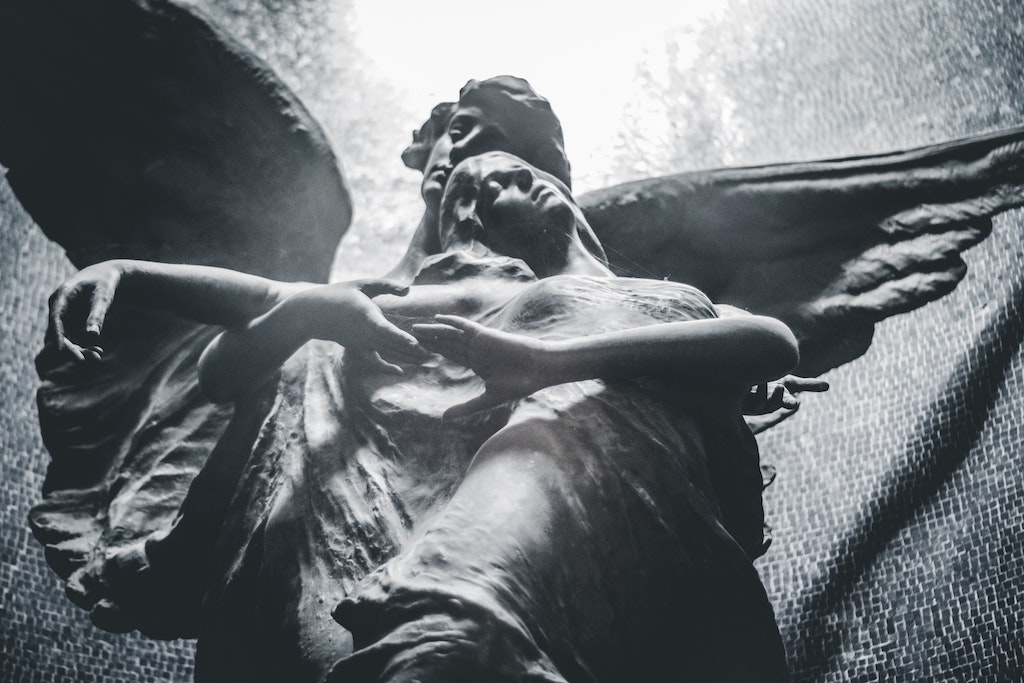
Death Doulas: A Bridge Between Worlds
Death Doulas, or those who mid-wife the dying, may be a new term to some, but they have been as present as death itself. Many cultures throughout history provided mental, spiritual, physical and emotional support as a fundamental part of the transition to death. Though each culture has its own special relationship with death. In some death is not feared, and taken as a matter of fact. In others death is avoided, not spoken of and split off from daily life.
What is a Death Doula?
A Death Doula is a non-medical person trained to care for someone holistically (physically, emotionally and spiritually) at the end of life. Death Doulas are also known around the world as: end of life coaches, transition guides, death coaches, end of life doulas, and many other titles.
This support often focuses on the emotional, psychological and spiritual side of dying, as well as the more practical things.
What do Death Doulas do?
Death Doulas are people who support people during the end of life process. It is “non-medical profession” that recognizes death as a natural, accepted, and honored part of life.
Death Doulas can:
- Help create positive, empowering end of life plans
- Provide spiritual care, psychological and social support
- Suggest ideas for optimal physical comfort
- Help plan home vigils
- Educate patients and families on the new and progressive options of home wakes and natural burials.
What types of holistic support do Death Doulas offer?
A Death Doula cares for the whole person, taking into account the dying individual’s emotional, mental, spiritual, and physical factors. They provide invaluable assistance in three notable areas of holistic support:
Legacy: Sharing one’s story, giving wisdom, advice, love, to give the future a glimpse of your essence – who you were, how you saw the world, and what gave meaning to your life. Death Doulas can help with the powerful process of developing a legacy plan.
Presence: Having someone present with the experience and training in such a time can bring a sense of comfort and familiarity to the otherwise unfamiliar. Death Doulas provide holistic support as they accompany individuals and their families before, during, and after death.
Dignity: Creating an environment that brings dignity and comfort.
Bridge Between Worlds
Having the experience of knowing the spirit world and the world of the living brings a unique perspective to a Death Doula. They have a better grasp of one’s purpose, what comes after this phase and the experiences that occur at the moment of death. They have the unique vision of witnessing death change perceptions of life.
How to become a Death Doula
Becoming a Death Doula can be an immensely fulfilling and enlightening experience. If you wish to offer end-of-life support and care, you can join an institution that provides courses and certifications. But because no national accredited body or centralized organization oversees doula training, you won’t need to take any standardized state board or license exams to get certified.
Each private Death Doula program may differ slightly in training requirements and coursework, but they all provide an education grounded in helping you become the most compassionate and supportive end-of-life doula.
Who can become a Death Doula?
Anyone can become a Death Doula. Before committing to the training, familiarize yourself with the mental and emotional demands of this path. Providing this kind of care can be extremely rewarding, but it can also take a toll on those who are not fully prepared for the intensity of experiencing death so closely. Consider educating yourself more on this position, interviewing other doulas, and exploring death studies before joining a program.
Death Doulas and Death Walking
Death Doulas often have consciously chosen and sought out training for such a role. The training tends to focus more on the pragmatic aspects of preparing for death as well as holding space for the dying and their family.
Death Walking, on the other hand, does include aspects of being a Death Doula, but incorporates more spiritual elements such as energy healing and shamanic practices. Some Death Walkers come to this role naturally in that they are often present when loved ones transition to death. They might not understand at first the role they are in, but they provide support through the transition to death. Gay and Queer men in particular are often called to being a Death Walker in that being a liminal people we traverse the line between worlds. In the Unnamed Path we directly acknowledge death as a natural process and we work with spirit to better understand our place in the Worlds. Communicating with the spirit world assists us in understanding the transition of moving from one world to the other, granting us the compassion to help those in transition.
The post Death Doulas: A Bridge Between Worlds appeared first on Unnamed Path.
26 October 2022, 7:31 pm - Magic & Prophecy
In the rich and diverse world of spirituality, a unique journey emerges at the crossroads of gay love and shamanistic practices, known as the Unnamed Path. This path includes a blend of magic and prophecy, offering a profound way for Men Who Love Men to connect with their spiritual essence and shape their future.
At the heart of Unnamed Path lies the art of prophecy, a practice deeply rooted in the realms of divination, seership, and scrying. These techniques are not just methods of foreseeing future events, but are gateways to opening the inner eye. By developing “the sight,” individuals gain insight into the unfolding patterns of life, allowing them to anticipate and prepare for what lies ahead.
Complementing prophecy is the practice of magic, an elemental aspect of this spiritual journey. Magic in Unnamed Path involves the thoughtful use of natural elements like roots, herbs, and minerals. However, it extends far beyond these materials, reaching into the shamanic world. Here, practitioners form powerful alliances with a range of spiritual entities: from ancestral spirits to deities, and from the spirits of the land to those of the departed. These connections are not merely symbolic; they are channels through which tangible change can be manifested in the physical world.
The fusion of magic and prophecy in Unnamed Path is more than a set of practices; it’s an active, dynamic process of bringing about transformation. It invites individuals to not only foresee truth but to actively participate in its creation. This path is particularly resonant for queer individuals, offering a space where gay spirituality can flourish, free from the constraints of traditional norms and aligned with a deeper, more personal truth.
The Unnamed Path is a testament to the power and beauty of queer spirituality, shamanism, and the transformative potential of love between men. It’s a journey that honors the unique experiences of gay and queer male identifying individuals, while also connecting them to the universal rhythms of the natural and spiritual worlds. Whether you are seeking personal growth, deeper spiritual connections, or a greater understanding of your place in the cosmos, Unnamed Path offers a rich and fulfilling journey for exploration and discovery.
The Unnamed Path deeply resonates with gay spirituality and shamanism, ifurther enriched by its incorporation of traditional witchcraft, folk magic, and a unique form of queer magic. These practices add layers of depth and complexity to the magical path, making it an even more comprehensive spiritual experience for Men Who Love Men.
Traditional witchcraft elements are woven into the fabric of Unnamed Path. It’s characterized by its earth-based spirituality and a deep connection to the natural and spirit world. Participants in this path engage in techniques that align with this connection and fosters a profound bond with nature and its inherent powers, enabling practitioners to tap into pretanatural wisdom and energy.
Folk magic, another integral component of the Unnamed Path, is rooted in the customs and traditions of various cultures. It is a practical form of magic, often focused on healing, protection, and the blessing of everyday life. This aspect of the path often involves the use of simple, accessible materials and methods, such as candle magic, charm bags, and the creation of amulets. Folk magic’s emphasis on the practical and accessible makes it particularly appealing and approachable for those walking Unnamed Path.
Perhaps the most distinctive aspect of Unnamed Path is its embrace of queer magic. Queer magic is a form of spiritual practice that specifically addresses the experiences, challenges, and strengths of the LGBTQ+ community. This type of magic often involves reclaiming and reinterpreting traditional symbols and rituals in a way that reflects queer experiences and values. It empowers practitioners to celebrate their identity and to harness their unique energies for personal growth and transformation. Queer magic within Unnamed Path becomes a powerful tool for self-acceptance, community building, and resistance against societal norms that have historically marginalized queer voices.
The integration of traditional witchcraft, folk magic, and queer magic makes Unnamed Path a deeply holistic and inclusive spiritual experience. It offers a space where gay and queer male identifying individuals can explore their spirituality in a way that is both deeply personal and profoundly connected to a broader historical and cultural context. The Unnamed Path stands as a beacon of empowerment, healing, and transformation, providing a unique and powerful way for Men Who Love Men to navigate their spiritual journey. Through this path, practitioners are able to connect with, embrace and celebrate their true selves in all their complexity and beauty.
The post Magic & Prophecy appeared first on Unnamed Path.
28 September 2022, 8:35 pm - Deathwalking
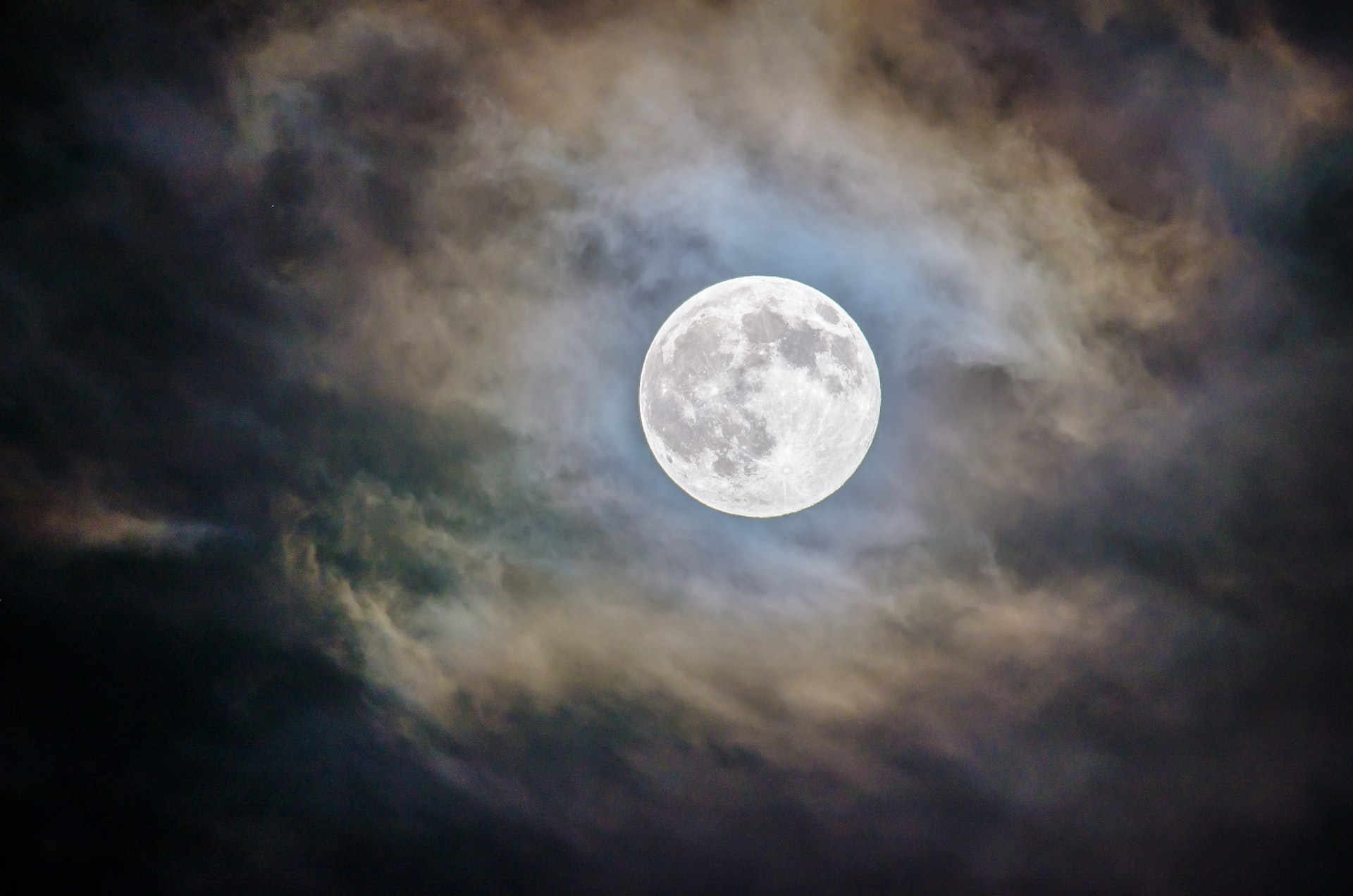
What is Deathwalking?
Deathwalking is one of the four parts of Unnamed Path. Deathwalking can best be described as a collection of spiritual practice techniques used in working with spirits of the dead and with those who are dying.
From the Unnamed Path’s perspective, Deathwalking is a tribe-given spiritual ability using our innate spiritual quality to cross and communicate between the worlds. It gives us a unique role in society – that of the path of the Deathwalker. We can help the dying by making their transition one of love, joy, and peace. We can commune, work with and assist spirits of the dead for purposes of healing and divination. We can forge alliances with the spirits of the dead to assist us in strengthening our practice and abilities to help others.
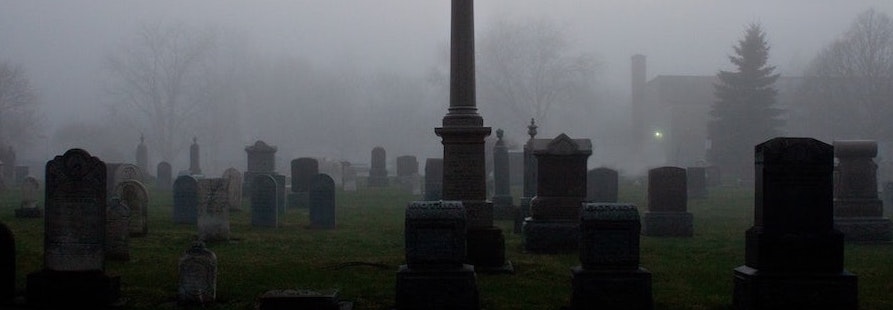
There is a huge cultural fear around death. We are sheltered from it, don’t want to be anywhere near it, and even fear being near places where people have died in the past. This fear of death comes from the perspective that it is a finality to life. It is not. It is a transition from physicality to spirituality, just as birth is a transition from spirituality to physicality. The Unnamed Path Deathwalker understands this in helping those who are dying in doing so with honor and anticipation in their hearts instead of fear, and also helps them sort through any remaining issues or attachments they might have anchoring them here in the physical world preventing them from finally passing over.
The Deathwalker acts as a medium for spirit communication. They can reach through the veil between the worlds and communicate with the departed, assist them in the transition from that side, as well as forge alliances with spirits to work Magic and Prophecy as well as Energy Healing. The Deathwalker learns through this process, not to fear death, but to embrace it as a natural part of life.
Spirit Contact
Spirit Contact is an aspect of Deathwalking that trains the initiate in techniques that allow them to communicate and work with spirits in a very direct way.
Mediumship & Spiritualism
Mediumship is the practice of mediating communication between familiar spirits or spirits of the dead and living human beings. Practitioners are known as mediums or spirit mediums. There are different types of mediumship through spirit channeling and trance.
Spiritualism in the Unnamed Path is also an aspect of being a Deathwalker. The techniques work in conjunction with other aspects to foster spirits to communicate with the living through the Unnamed Path initiate.


Channeling
Channeling is best explained as a person’s body being a mouth piece for a spirit for the purpose of communication. This practice has been around for millennia. There are countless stories of practitioners who commune and receive supernatural knowledge from the spirit world. Channeling in Unnamed Path incorporates the other skills learned in Deathwalking. This allows the trained initiate of the Unnamed path to work in the spirit world and provide assistance to those in the Mundane World.
Necromancy
Necromancy of Unnamed Path is a subpath of Deathwalking. In this practice one learns the techniques for communing with the dead for the purpose of divination; imparting the means to foretell future events and discovering hidden knowledge.
Psychopomp
Psychopomps (from the Greek word psychopompós, literally meaning the ‘guide of souls’) of the Unnamed Path are ones who have chosen the spiritual work to assist deceased souls from this world to the spirit world. In the path of Deathwalking this subpath trains one to understand the techniques to facilitate this transition.
Death Doula (link to blog post)
The Death Doula role is being a mid-wife to the dying. It is part of Death Walking as well but includes some more practical elements such as creating end of life plans, legacy plans and assisting families and loved ones prepare for the transition to death.
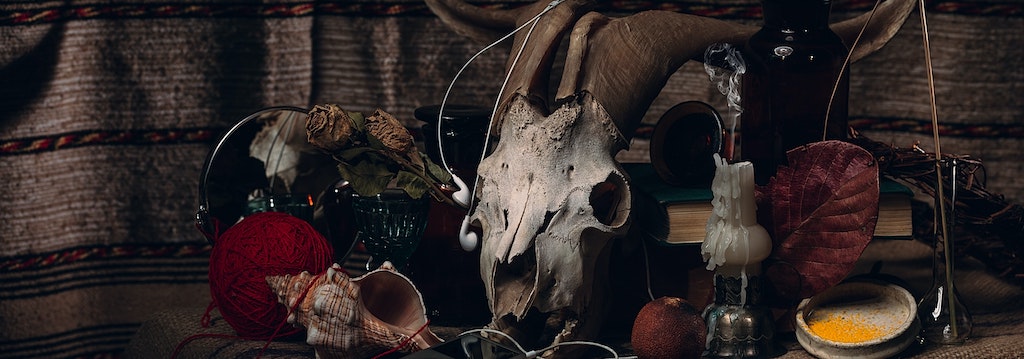
The post Deathwalking appeared first on Unnamed Path.
28 September 2022, 8:35 pm - Energy Healing
One of our first tribe-given spiritual practices The Ancestors of Men-Who-Love-Men revealed was the path of Energy Healing. We have an ancestral heritage as healers and holders of medicine for our people. When illness would not clear itself from a person’s body we were sought out because of our extensive knowledge of herbs and our alliances and relationships with the spirit world. We knew how to channel and move energy to help facilitate healing within people.
The Ancestors of Men-Who-Love-Men have communicated techniques for energy healing. One important aspect in Unnamed Path is that energy is channeled through the healer (not from them) using their unique capacity to Love as a man who loves men. We are taught a unique system of energy healing which includes a series of sigils that can be used to direct the energy to the recipient and act as channels or beacons that continue to move the energy into the individual long after the session is complete.
The energy helps the individual heal himself and brings balance and harmony back to the recipient’s entire body, mind, emotions and soul.
The post Energy Healing appeared first on Unnamed Path.
28 September 2022, 8:34 pm - More Episodes? Get the App
- http://unnamedpath.com
- English
Your feedback is valuable to us. Should you encounter any bugs, glitches, lack of functionality or other problems, please email us on [email protected] or join Moon.FM Telegram Group where you can talk directly to the dev team who are happy to answer any queries.
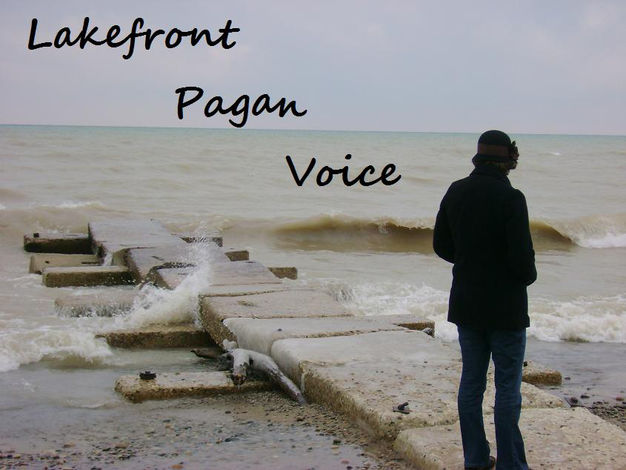 Lakefront Pagan Voice
Lakefront Pagan Voice
 Hex Education!
Hex Education!
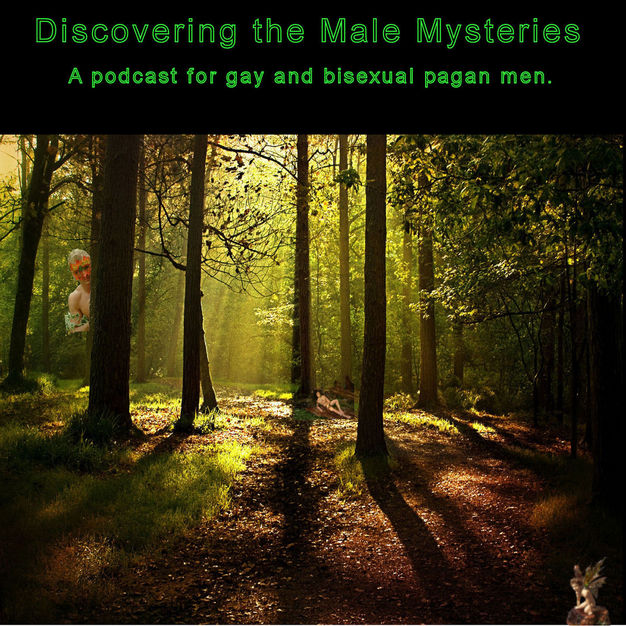 Discovering the Male Mysteries
Discovering the Male Mysteries
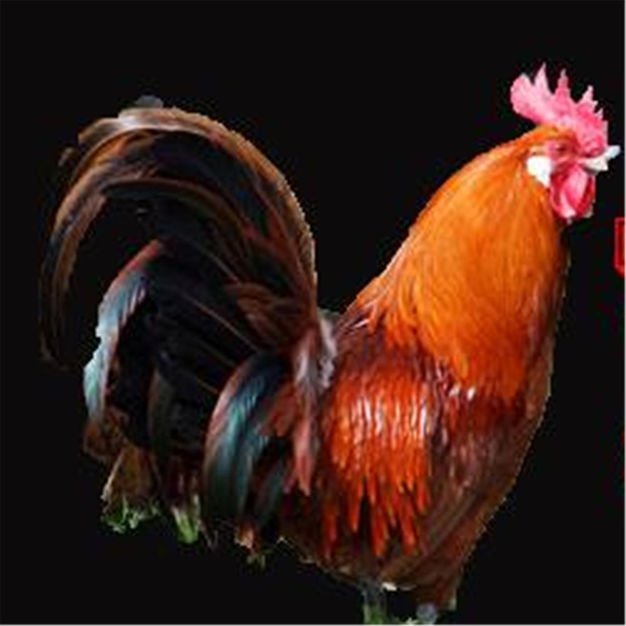 Old Style Conjure
Old Style Conjure
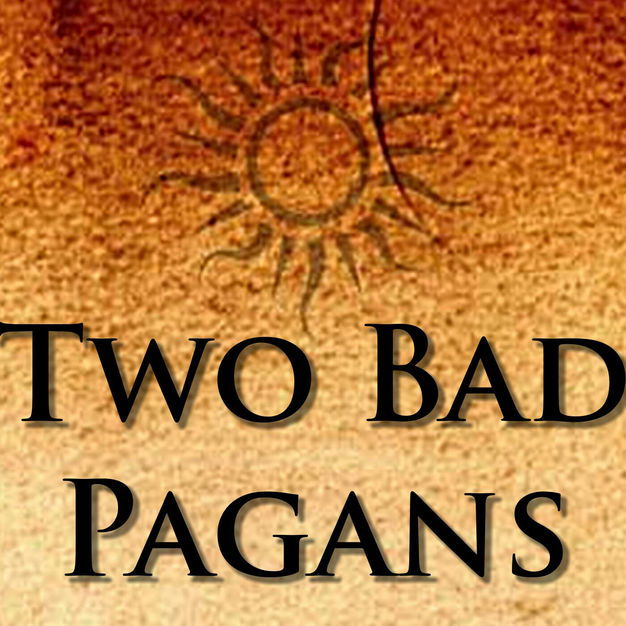 Two Bad Pagans
Two Bad Pagans